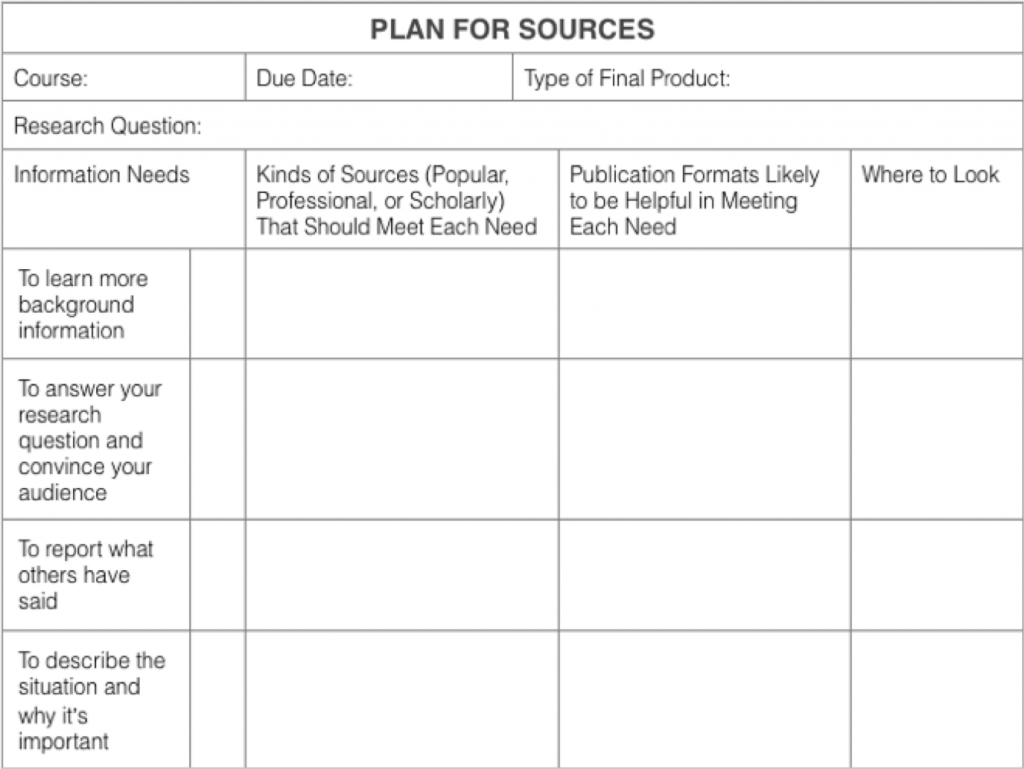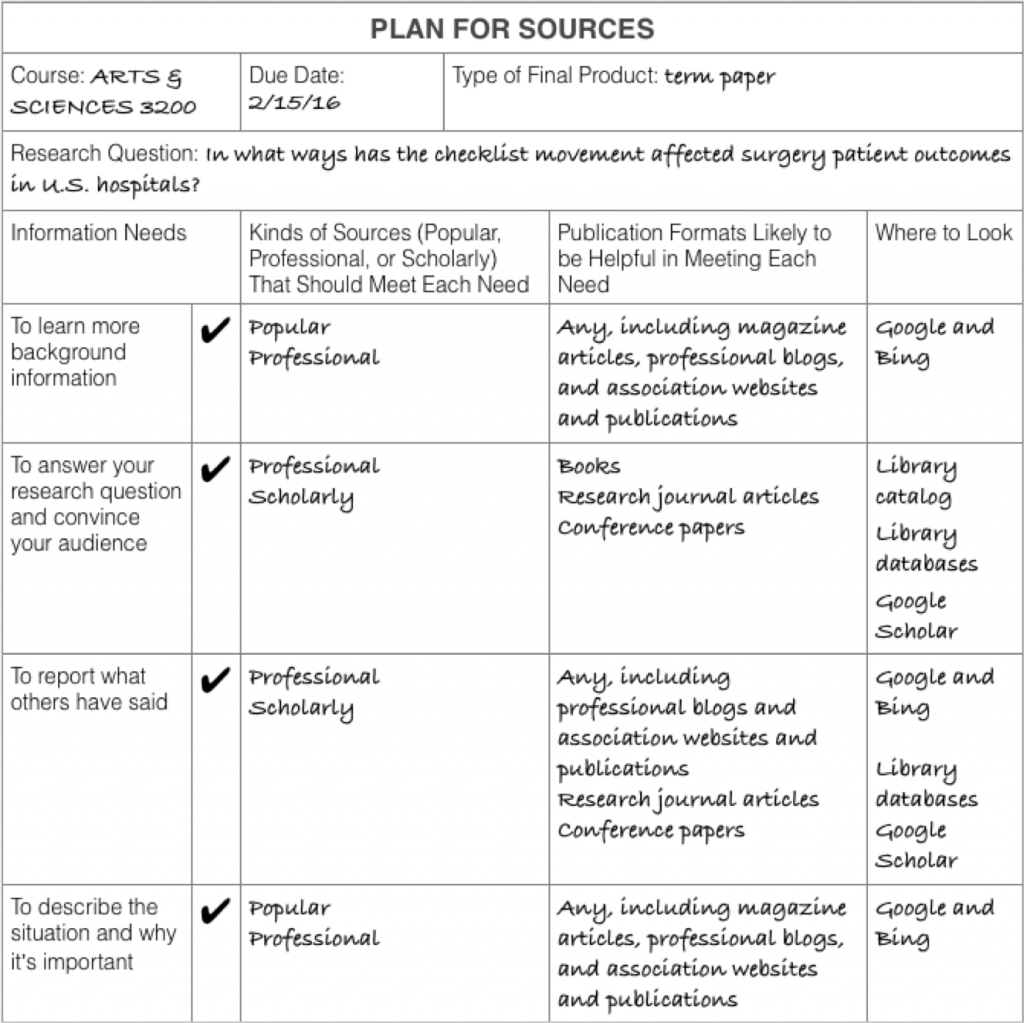3-Sources and Information Needs
3. Planning Your Sources
Okay, you should be able to tell from the information above which sources will be most useful to you for specific kinds of courses. When you are about to start a research project in such a course, actually making a plan for the kinds you need will save you time as you search for sources.
Student Voices: Gabe talks about planning his sources | Transcript
Instead of just seeing what sources you can find “out there,” having a plan can help you conscientiously choose sources that will meet all your information needs. It will save you time in the long run and will lead to more successful research projects, with fewer last-minute panics over not having the best sources. It’s very comforting to have a plan all in one place so that you can just follow the plan and aren’t having to re-think everything each time you look for sources. Perhaps most important, it can also help you answer the question “Have I have found enough sources?” which really depends on whether you have sources to meet all your information needs.
Here’s a form for such a plan, called Plan for Sources, plus an example of it filled out for a hypothetical research project. You can download a copy of the form to fill out for your own research project in Word at http://go.osu.edu/planforsources. (On our example form, the √ indicates the student thinks she has found all the sources she needs to meet that need.)

Example: Sample “Plan for Sources” Table

Knowing what you need is a huge clue to knowing where to look for them. Here’s another aid to make it easier to plan for what you need and then find your sources.
Our Source Locator can help by suggesting where to find particular kinds of sources in various formats. Once more, thinking of categories can help because where sources are located is generally organized by audience expertise level—by whether they are popular, professional, or scholarly sources. Popular and professional are often grouped together. But scholarly sources tend to hang out by themselves. That’s why searching Google Scholar locates more of them than plain old Google, and academic libraries have more scholarly sources than public libraries. However, disciplines can still influence where you should and should not look for those sources. For example, if you are majoring in the life sciences, ask your professor whether Google Scholar is okay to use. They may tell you to use the library database called PubMed instead.
